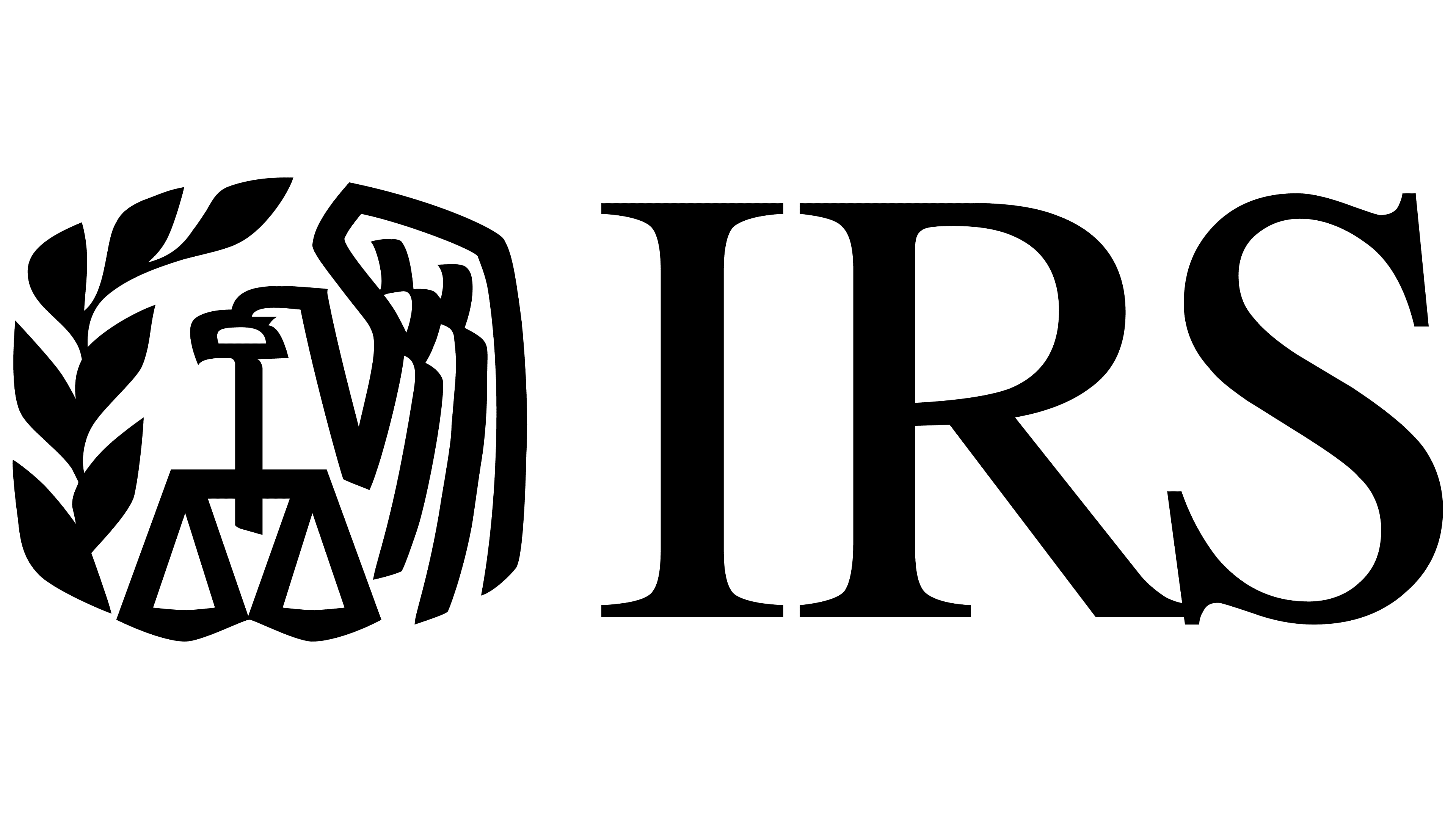






5-Star Service, Trusted & Loved by Hundreds
Your Appraiser Search Ends Here
Your Appraiser Search Ends Here
.avif)

Nationwide Coverage – Appraisals Anywhere in the US

Get it done Onsite or Online

Any Asset, Covered

Defensible for Any Purpose
Damage claims serve as a critical mechanism for addressing unexpected financial burdens across multiple contexts. They typically arise in scenarios involving property destruction, personal injury, business interruption, or liability issues. The core purpose is to restore the affected party to their financial position prior to the damaging event.
The complexity of damage claims varies depending on the specific circumstances. Some may involve straightforward property repairs, while others require extensive investigation and expert assessment. Key components include thorough documentation, precise damage evaluation, and strategic negotiation to achieve fair compensation.
Successful damage claims depend on several fundamental elements: comprehensive evidence gathering, timely reporting, professional damage assessment, and clear communication between all involved parties. Claimants must be prepared to provide detailed documentation, including photographs, repair estimates, medical records, and incident reports.
Different types of damage claims exist, each with unique characteristics. Property damage claims address physical asset destruction, automobile claims cover vehicle-related losses, liability claims handle negligence-induced damages, and business interruption claims compensate for operational disruptions.
The claim process typically follows a structured approach: initial documentation, formal notification, professional damage assessment, negotiation, and final resolution. Each stage requires careful attention to detail and strategic approach to maximize potential compensation.
Understanding the nuanced nature of damage claims empowers individuals and businesses to navigate complex compensation scenarios effectively, ensuring fair treatment and financial protection in challenging circumstances.
A professional appraisal establishes a precise monetary value for damaged property, offering a comprehensive assessment that goes beyond subjective estimations. By meticulously documenting the extent and financial impact of damage, an appraisal creates a robust foundation for your claim.
Accredited appraisers bring specialized expertise to the evaluation, analyzing intricate details that untrained individuals might overlook. Their objective assessment considers multiple factors including market conditions, comparable property values, and specific damage characteristics. This professional approach ensures a fair and accurate representation of the property's true value.
Documentation from a professional appraisal becomes a powerful tool when negotiating with insurance providers. The detailed report serves as compelling evidence, substantiating the extent of damages and providing a clear, quantifiable basis for compensation. This documentation can significantly expedite the claims process and minimize potential disputes.
The appraisal also provides claimants with confidence and clarity during what can often be a stressful experience. By presenting a comprehensive, expert-level analysis, individuals can approach insurance negotiations with greater assurance and strategic insight.
Moreover, a professional appraisal strengthens a claimant's negotiating position. The rigorous, well-documented evaluation makes it considerably more challenging for insurance companies to undervalue or dismiss legitimate claims. This approach ultimately increases the likelihood of receiving fair and appropriate compensation.
The process involves a detailed forensic examination of the silver piece, where expert appraisers leverage deep knowledge to uncover intricate details about the item's provenance. Specialized techniques are employed to authenticate the piece's origin, including careful analysis of hallmarks, maker's stamps, and distinctive design elements that provide critical insights into its historical context.
Condition plays a pivotal role in determining value. Professional appraisers conduct meticulous inspections, examining every surface for signs of wear, potential restoration attempts, and structural integrity. They assess subtle nuances like patina development, manufacturing techniques, and preservation quality that can dramatically influence the item's market worth.
Market research forms another crucial component of the appraisal process. Appraisers conduct extensive comparative analyses, tracking recent auction results, collector trends, and current market demands to establish a precise and current valuation. This approach ensures that the assessment reflects not just the silver's intrinsic material value, but its broader collectible significance.
The ultimate goal of an antique silver appraisal extends beyond a simple monetary figure. It provides owners with comprehensive documentation that serves multiple purposes, from insurance documentation to estate planning, offering a definitive understanding of the item's historical and financial importance.
The virtual appraisal process typically involves clients providing high-resolution images from multiple angles, along with critical details about the item's provenance, markings, condition, and historical context. Advanced video conferencing platforms like Zoom or Skype enable real-time interactions, allowing appraisers to conduct interactive examinations and answer client questions immediately.
Professional online appraisals adhere to the Uniform Standards of Professional Appraisal Practice (USPAP), ensuring rigorous methodology and credible valuation regardless of assessment format. This approach eliminates geographical constraints, providing flexibility for clients located anywhere and streamlining the entire valuation experience.
While online appraisals offer remarkable convenience, they are most effective when clients provide extensive, clear documentation. Precise photographs, accurate measurements, and comprehensive background information are crucial for delivering an accurate assessment of an antique silver item's condition, authenticity, and market value.
Clients should understand that some complex or rare pieces might still require in-person examination to determine a definitive valuation. However, for many antique silver items, online appraisals represent an efficient, professional, and accessible method of understanding an item's worth.
General appraisers offer broad knowledge across multiple antique categories, capable of evaluating various silver items with a comprehensive but less specialized approach. Their versatility allows them to assess diverse silver pieces, though they may lack granular insights into rare or complex items.
Specialty appraisers represent a more focused category, concentrating on specific historical periods, cultural origins, or design styles. These experts possess deep, targeted knowledge about particular silver manufacturing eras, makers, or regional craftsmanship. Their expertise enables precise authenticity assessments and nuanced market value determinations.
Certified appraisers bring professional credentials from recognized institutions, demonstrating rigorous training and adherence to established ethical standards. Their qualifications make them particularly valuable for formal documentation requirements like insurance evaluations or estate planning.
Auction house appraisers leverage extensive market experience, providing real-time insights into current silver valuation trends. Their proximity to active market dynamics allows them to offer sophisticated pricing assessments based on contemporary collector interests and market demands.
Independent appraisers operate autonomously, offering customized services with flexible engagement models. Their professional independence allows for personalized approaches tailored to unique client requirements and specialized silver item assessments.
Online appraisers represent an emerging category, utilizing digital platforms to conduct remote evaluations. Through advanced photographic documentation and detailed item descriptions, these professionals provide convenient assessment options for clients unable to engage in traditional in-person consultations.
Each appraiser type contributes unique perspectives to silver valuation, enabling owners to find precisely matched expertise for their specific needs.
Insurance protection represents a critical motivation for professional assessment. A detailed appraisal ensures accurate coverage, preventing potential financial gaps in the event of loss, damage, or theft. Insurance providers rely on professional documentation to establish appropriate compensation levels.
Estate planning demands precise valuation of inherited silver pieces. A professional appraisal provides clear, objective documentation that can streamline inheritance processes, minimize potential family disputes, and establish a transparent framework for asset distribution.
Tax considerations make appraisals particularly valuable for those considering charitable donations. When donating antique silver items exceeding $5,000, a qualified professional appraisal becomes essential for substantiating value and maximizing potential tax deductions.
For collectors and sellers, an appraisal delivers a realistic market assessment. This knowledge empowers informed decision-making, whether preparing to sell at auction, negotiate with potential buyers, or understand the current market positioning of a specific piece.
Beyond monetary considerations, an appraisal unveils the historical narrative embedded within each silver item. Professional assessment reveals intricate details about craftsmanship, origin, and cultural significance, transforming an object from a mere possession to a meaningful artifact with its own unique story.
Understanding the multifaceted value of antique silver through professional appraisal enables owners to make informed, strategic decisions about preservation, insurance, potential sale, and long-term asset management.
Antique appraisals are quoted on a project-by-project basis. These appraisals can be completed with in-person and online methods; in-person appraisals will sometimes include travel fees, when applicable. For some projects, when necessary, the price can be determined ahead of time, in line with the specifications of the work.
What Makes Antique Silver Valuable?
Key Factors Determining Antique Silver Value
Antique silver represents a complex intersection of historical significance, artistic craftsmanship, and material quality. Understanding the intricate elements that contribute to its value is essential for accurate appraisal, especially in damage claim scenarios.
Age and Historical Significance
- Older pieces, particularly from the 18th and 19th centuries, typically command higher values
- Historical context dramatically impacts valuation
- Documented provenance enhances potential worth
- Pieces connected to significant historical events or notable personalities are especially prized
Craftsmanship and Artistic Merit
- Intricate design work significantly increases value
- Presence of specialized techniques like hand-chasing or detailed engraving
- Maker's marks from renowned silversmiths indicate quality and authenticity
- Unique artistic expressions differentiate premium pieces
Rarity and Collector Desirability
- Limited production numbers drive collector interest
- Unusual styles or distinctive motifs increase potential value
- Pieces that fill specific collection niches are highly sought after
Material Composition and Condition
- Higher silver content translates to greater monetary value
- Pure silver pieces are more valuable than silver-plated items
- Pristine condition without significant wear or damage is crucial
- Minimal repairs preserve original aesthetic and market worth
Comprehensive evaluation of these factors ensures an accurate and fair assessment of antique silver, particularly when determining value for damage claims.
Why Professional Appraisals Matter for Insurance Claims
When it comes to filing insurance claims for damaged antique silver, a professional appraisal is a critical step in protecting your valuable assets and ensuring fair compensation.
The Importance of Professional Appraisals in Insurance Claims
Establishing Accurate Market Value
Professional appraisals are essential for determining the true value of antique silver, which can be influenced by several key factors:
- Age of the piece
- Rarity and uniqueness
- Current condition
- Historical provenance
- Maker's reputation
Comprehensive Documentation
A professional appraisal provides more than just a monetary assessment. It offers:
- Detailed written descriptions
- High-quality photographs
- Comprehensive condition reports
- Expert analysis of distinguishing features
Insurance Company Requirements
Most insurance providers rely on professional appraisals to:
- Verify the item's true value
- Expedite claims processing
- Reduce potential disputes
- Ensure fair compensation
Benefits of Professional Appraisal
By working with an accredited appraiser, you gain several critical advantages:
- Compliance with industry standards
- Objective and unbiased valuation
- Expert understanding of market trends
- Comprehensive documentation for legal purposes
A professional appraisal is more than a formality—it's a crucial step in protecting your valuable antique silver and ensuring you receive appropriate compensation in the event of damage or loss.
Identifying Rare and Collectible Silver Pieces
Understanding Silver Identification for Appraisal
Identifying rare and collectible silver pieces requires a sophisticated blend of expertise, historical knowledge, and careful examination. For antique silver appraisal, particularly in damage claim scenarios, understanding key identification factors is crucial to accurate valuation.
Critical Factors in Silver Identification
- Hallmarks and Maker's Marks
Hallmarks provide essential information about a silver piece's origin, purity, and manufacturing history. These intricate stamps are typically found on the underside or rim of the item, offering valuable insights into:
- Manufacturer's identity
- Country of origin
- Silver purity percentage
- Year of production
- Silver Composition Analysis
The metal's composition significantly impacts its value and collectibility. Key considerations include:
- Sterling silver (92.5% pure silver)
- Coin silver (90% pure silver)
- Unique alloy compositions
Historical significance and craftsmanship quality can dramatically influence a piece's overall value beyond its basic metal content.
- Historical Style and Design Evaluation
Each historical period produces distinctive silverware styles that reflect contemporary artistic and cultural trends:
- Georgian era: Ornate, elaborate designs
- Arts and Crafts movement: Minimalist, handcrafted aesthetics
- Art Nouveau: Flowing, organic patterns
- Mid-century modern: Streamlined, geometric forms
- Condition and Preservation Assessment
The item's physical condition is paramount in determining its collectible value. Key evaluation points include:
- Extent of tarnish
- Presence of dents or scratches
- Quality and history of previous repairs
- Overall structural integrity
Final Considerations
Professional silver identification requires a comprehensive approach that combines technical knowledge, historical understanding, and meticulous visual examination. By carefully analyzing hallmarks, composition, style, and condition, experts can provide accurate and reliable assessments of rare and collectible silver pieces.
Key Factors Determining Antique Silver's Worth
Factors Determining Antique Silver's Worth
When evaluating antique silver for appraisal or damage claims, several critical factors influence its overall value. A comprehensive assessment considers multiple dimensions beyond simple monetary worth.
1. Age and Historical Significance
- Antique silver is typically defined as pieces over 100 years old
- Historical significance substantially increases potential value
- Pieces created by renowned silversmiths command premium prices
- Connection to notable historical events enhances collectible status
2. Condition Assessment
- Overall preservation is paramount in determining value
- Signs of wear, damage, or improper restoration can significantly decrease worth
- Original finish and natural patina are highly desirable
- Minimal restoration or professional conservation increases appraisal value
3. Craftsmanship Quality
- Intricate design elements elevate potential market value
- Detailed engravings and unique shapes attract collector interest
- Technical skill and artistic execution are critical evaluation criteria
- Complexity of manufacturing techniques impact overall assessment
4. Rarity and Market Demand
- Limited production quantities increase potential value
- Market trends significantly influence collector interest
- Economic conditions play a role in silver valuation
- Unique pieces often command premium prices
5. Documentation and Provenance
- Comprehensive ownership history adds authenticity
- Previous professional appraisals enhance credibility
- Certificates of authenticity provide substantial supporting evidence
- Documented historical context increases potential value
Understanding these nuanced factors is essential for accurate antique silver valuation, particularly in damage claim scenarios.
The Comprehensive Appraisal Process Explained
Understanding the Antique Silver Appraisal Process
Assessing antique silver items for damage claims requires a meticulous and professional approach. The comprehensive appraisal process is designed to provide accurate documentation that supports your claim and ensures fair compensation for your valuable possessions.
Initial Consultation and Information Gathering
The appraisal journey begins with a critical first step: comprehensive information collection. Key elements include:
- Item's historical origin
- Precise age determination
- Current condition assessment
- Identification of distinctive markings
- Contextual historical background
Detailed Visual Inspection
A thorough visual examination is crucial to understanding the item's condition and potential value impact. Appraisers meticulously evaluate:
- Surface integrity
- Evidence of damage or wear
- Dents and scratches
- Tarnishing extent
- Previous repair history
Market Value Research
Professional appraisers conduct comprehensive market analysis by examining:
- Recent comparable sales
- Auction results
- Current market demand
- Collector interest trends
- Rarity and unique characteristics
Comprehensive Documentation
The final stage involves creating a detailed written report that includes:
- Precise item description
- High-quality photographs
- Appraiser's professional credentials
- Detailed value assessment
- Supporting research documentation
The antique silver appraisal process is a systematic approach that combines expert knowledge, careful observation, and thorough research. By following this methodical process, you can obtain a reliable valuation that accurately represents your item's true worth for damage claim purposes.
Navigating Insurance Claims with Expert Documentation
Essential Steps for Effective Insurance Claims Documentation
Successfully navigating an insurance claim for damaged antique silver requires strategic preparation and comprehensive documentation. A professional appraisal serves as the critical foundation for substantiating the value of your treasured items.
Key Documentation Strategies
- Comprehensive Appraisal Requirements
A professional appraisal should include:- Detailed monetary valuation
- Precise item condition assessment
- Authentication details
- High-resolution photographs
- Comprehensive written descriptions
- Selecting a Qualified Appraiser
Prioritize appraisers with:- Professional credentials from recognized organizations
- Specialized expertise in antique silver
- Proven track record of detailed documentation
- Membership in professional appraisal associations
- Understanding Insurance Valuation Methods
Familiarize yourself with different insurance valuation approaches:- Actual cash value
- Replacement value
- Agreed value policies
Proactive Documentation Practices
- Maintain a current, detailed inventory of your antique silver collection
- Preserve original purchase receipts
- Collect and organize previous professional appraisals
- Take comprehensive, high-quality photographs of each item
- Store documentation in a secure, easily accessible location
Effective Insurer Communication
When submitting your claim, ensure you:
- Provide a complete, organized documentation package
- Be prepared to answer detailed questions about your items
- Remain patient and professional throughout the process
- Follow up consistently and maintain clear communication
By implementing these strategic documentation practices, you can significantly enhance your ability to navigate the insurance claims process effectively, maximize your potential settlement, and reduce associated stress.
How to Select the Right Silver Appraisal Professional
Key Considerations When Selecting a Silver Appraisal Professional
Choosing the right silver appraisal professional is critical, especially for damage claims. An accurate appraisal determines the true financial value of your antique silver items and provides essential documentation for insurance or legal purposes.
Essential Qualifications to Evaluate
- Professional Credentials: Look for designations from respected organizations such as:
- Certified Appraiser of Personal Property (CAPP)
- Member of American Society of Appraisers (ASA)
- Member of International Society of Appraisers (ISA)
- Specialized Experience: Prioritize professionals with extensive background specifically in antique silver appraisal
- Deep Market Knowledge: Experts who understand historical pricing, current market trends, and valuation factors
Critical Specialization Areas to Verify
- Expertise in different silver types (sterling, coin silver)
- Ability to identify intricate markings and hallmarks
- Understanding of various historical periods and styles
- Comprehensive knowledge of factors impacting silver valuation
Methodology and Transparency Checklist
- Confirm adherence to Uniform Standards of Professional Appraisal Practice (USPAP)
- Understand their specific valuation approaches:
- Market comparison method
- Cost approach analysis
- Replacement value assessment
- Request detailed explanation of their appraisal process
- Ensure comprehensive documentation and reporting
Vetting Your Potential Appraiser
- Research professional background thoroughly
- Check online reviews and client testimonials
- Request sample appraisal reports
- Verify professional references
By meticulously evaluating these key factors, you can confidently select a silver appraisal professional who will provide an accurate, reliable assessment for your damage claim needs.
Protecting Your Antique Silver: Prevention and Valuation
Preserving the Value of Your Antique Silver
Antique silver items represent more than mere decorative pieces—they are valuable historical artifacts that embody craftsmanship, family history, and significant financial worth.
Comprehensive Protection Strategies
Protecting your antique silver requires a multi-faceted approach:
- Environmental Control
- Maintain stable temperature and humidity levels
- Avoid direct sunlight and extreme environmental fluctuations
- Store in climate-controlled spaces with consistent conditions
- Handling Precautions
- Use soft, lint-free gloves when handling delicate pieces
- Utilize protective cases or padded storage solutions
- Handle items carefully to prevent accidental scratches or dents
- Cleaning Techniques
- Use specialized silver cleaning materials
- Avoid abrasive cloths or harsh chemical cleaners
- Clean gently to preserve original patina and surface integrity
Professional Valuation Essentials
A comprehensive appraisal is critical for understanding your antique silver's true value. Key considerations include:
- Detailed condition assessment
- Identification of hallmarks and maker's marks
- Evaluation of historical significance
- Analysis of current market trends
- Comprehensive documentation of unique characteristics
Strategic Appraisal Recommendations
To maximize protection and value documentation:
- Schedule professional appraisals every 3-5 years
- Update insurance documentation regularly
- Maintain a detailed photographic record of each piece
- Keep original purchase documents and provenance information
Claim Preparation Insights
In the event of damage or loss, a recent, professional appraisal provides critical documentation to:
- Substantiate the item's true market value
- Expedite insurance claim processes
- Ensure fair compensation
- Protect your financial interests
By implementing rigorous protection strategies and maintaining current appraisals, you safeguard not just the financial value of your antique silver, but also its historical and emotional significance.
Common Pitfalls in Silver Damage Assessment
Common Challenges in Silver Damage Assessment
Assessing damage to antique silver items requires precision and expertise. Understanding potential pitfalls can help owners navigate the complex process of damage evaluation more effectively.
Critical Documentation Challenges
- Insufficient historical records can significantly impede accurate valuation
- Essential documentation includes:
- Previous professional appraisals
- Original purchase receipts
- Comprehensive photographic evidence
- Comprehensive documentation provides crucial context for damage assessment
Damage Classification Complexities
Distinguishing between damage types is crucial for accurate valuation:
- Aesthetic Damage
- Superficial scratches
- Minor dents
- Limited impact on overall value
- Structural Damage
- Broken components
- Significant repairs
- Substantial reduction in item's authenticity and worth
Market Valuation Considerations
- Silver market values are dynamic and influenced by:
- Current collector demand
- Economic conditions
- Emerging collector trends
- Outdated market knowledge can lead to inaccurate valuations
- Professional appraisers must stay current with market fluctuations
Emotional Bias Management
Personal attachment can distort value perception:
- Sentimental value does not directly translate to monetary worth
- Professional appraisals require objective assessment
- Emotional detachment ensures fair market evaluation
Strategic Appraisal Approach
To ensure accurate silver damage assessment, owners should:
- Maintain comprehensive documentation
- Understand different damage classifications
- Stay informed about market trends
- Seek professional, objective evaluation
By addressing these critical factors, owners can navigate the silver damage assessment process more effectively and obtain a fair, accurate valuation.
Maximizing Your Insurance Claim: The Appraisal Advantage
When it comes to recovering losses from damaged antique silver pieces, having a professional appraisal can significantly bolster your insurance claim. The appraisal process not only establishes the value of your antique silver but also enhances your ability to negotiate effectively with your insurance provider.
Key Benefits of Professional Antique Silver Appraisal for Insurance Claims
1. Accurate Valuation
A qualified appraiser will assess your antique silver with a keen eye for detail, considering critical factors such as:
- Age of the piece
- Original maker or manufacturer
- Rarity of the item
- Overall condition and preservation
This meticulous valuation is essential for providing your insurer with an accurate representation of your items' worth, helping you avoid potential undervaluation.
2. Comprehensive Documentation
A professional appraisal provides a detailed report that includes:
- Precise condition assessment
- Comprehensive photographic evidence
- Detailed written descriptions
- Current market value estimation
This thorough documentation serves as vital evidence to support your claim, demonstrating the authenticity and significance of your antique silver to the insurer.
3. Professional Expertise
Insurance companies often rely on standardized depreciation schedules that may not accurately reflect the unique value of specialized items like antique silver. A professional appraiser's expertise can:
- Challenge generic valuation methods
- Provide specialized market insights
- Articulate the distinctive value of your collection
4. Enhanced Negotiation Leverage
A professional appraisal strengthens your position by:
- Presenting a clear, documented value
- Challenging potential lowball settlement offers
- Providing a comprehensive narrative of your collection's worth
5. Peace of Mind
Professional appraisal offers significant emotional and practical benefits, including:
- Confidence in the valuation process
- Reduced stress during insurance claims
- Comprehensive understanding of your collection's value
Utilizing a certified appraisal when claiming damages to your antique silver not only advocates for your financial interests but also honors the intrinsic value of these cherished items.
BEST-IN-CLASS APPRAISERS, CREDENTIALED BY:













